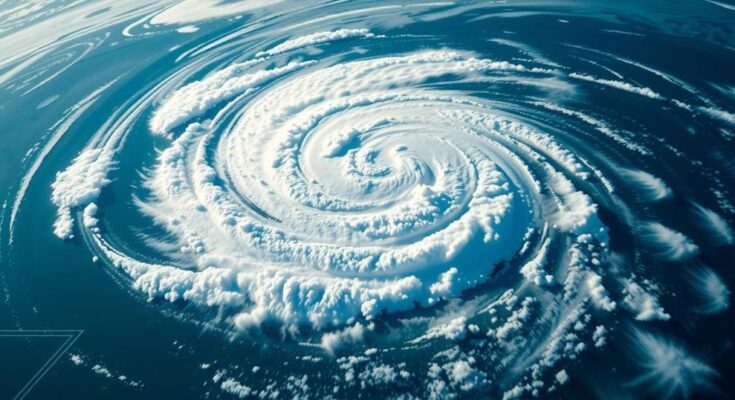Hurricane Rafael, a Category 2 storm, caused significant destruction in Cuba after its landfall as a Category 3 hurricane, resulting in power outages, building collapses, and mass evacuations. Currently situated over the Gulf of Mexico, it is expected to weaken further while posing risks of dangerous surf conditions. The storm’s influence extends beyond Cuba, affecting several Caribbean islands and highlighting the region’s vulnerability to natural disasters.
Hurricane Rafael has recently calmed into a Category 2 storm after making a significant impact as a Category 3 hurricane upon its landfall in Cuba. The hurricane swept through the region, leading to extensive destruction, including a power outage throughout the country and the collapse of hundreds of residential buildings. Affected citizens in places like Alquizar have begun the painstaking process of recovering their personal belongings from severely damaged homes. The hurricane, having affected several locations including Jamaica and the Cayman Islands, is currently positioned in the Gulf of Mexico, where it is expected to dissipate further in the forthcoming days. Forecasts indicate potential life-threatening surf and rip currents as Rafael continues its northwest path toward Mexico. In the aftermath of Hurricane Rafael, Cuba faces not only the destruction from the storm but also the challenges of restoring power and repairing damaged infrastructure. Approximately 283,000 evacuations were necessary as Rafael made its way across the island, leaving trees and debris scattered across numerous flooded streets. In the wake of the hurricane, the Cuban government reported that approximately 143,000 homes in Havana had regained power, yet significant areas remained without electricity. This hurricane struck Cuba against a backdrop of recent energy crises that had already burdened the nation with blackouts. Hurricane Rafael’s journey began as it impacted Jamaica and the Cayman Islands earlier in the week, where it caused power failures and mudslides. Following its passage through these regions, it arrived in Cuba, necessitating swift evacuation and recovery efforts. As the storm weakened into a Category 2 hurricane while situated 230 miles north-northeast of Progreso, Mexico, officials maintained vigilance given the potential for dangerous surf conditions caused by residual swells. Though no current hurricane warnings are in effect, the progression of the storm deserves careful monitoring as it alters its trajectory toward the west. The hurricane has had a devastating impact on the Caribbean, particularly in Cuba, where residents are confronted with the sheer force of nature’s wrath. The island’s recent troubles with energy supply and the strain from multiple natural disasters highlight the urgent need for preparedness and infrastructure resilience in the face of severe weather events. As authorities work diligently to address the immediate aftermath of Rafael, recovery efforts will prioritize restoring power and aiding those most affected by the destruction.
The article discusses Hurricane Rafael, which made landfall in Cuba and wreaked havoc across the region. It is pertinent to understand the context in which this hurricane was formed and its path through the Caribbean before striking Cuba. The island had already been grappling with energy crises and has faced recent blackouts, making the arrival of a powerful hurricane particularly challenging. The storm’s journey through Jamaica and the Cayman Islands before impacting Cuba draws attention to repetitive environmental challenges in the Caribbean, which have elevated the risks of such natural disasters.
In conclusion, Hurricane Rafael’s impact on Cuba illustrates the devastating effects of climate-related disasters on vulnerable regions. The storm not only caused extensive damage and loss of power but also amplified the existing strain on the island’s energy infrastructure. Moving forward, prioritizing recovery and enhancing resilience against future hurricanes will be crucial for the island’s communities. The situation calls for global awareness and preparedness in the face of increasing storm intensity attributed to climate change.
Original Source: apnews.com




